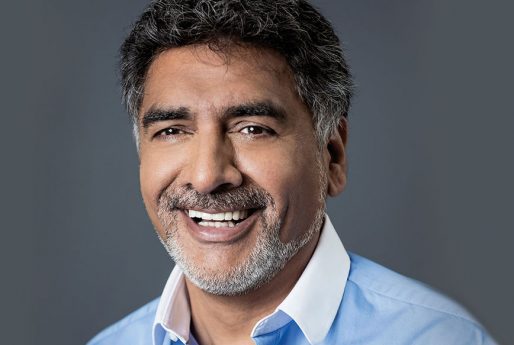Whether it’s for university fees or a deposit for a first house, putting money aside for your children as early as possible is hugely beneficial – especially if the interest pays off.
The financial pressures on today’s young adults are immense. Step forward a generation and along with uncertain future economic markets, it is inconceivable to think that today’s toddlers could well end up starting their young adult lives in serious debt. We explore the options open to new parents to save for their children’s future. If you invest wisely and start early enough, the financial prospects for your child in years to come could be a lot healthier than you think.
JUNIOR ISAs
With the huge popularity of adult individual savings accounts (ISAs), the government introduced junior ISAs (JISAs) at the back end of 2011 as a tax-free savings replacement for the much maligned child trust fund (CTF). JISAs provide a savings vehicle for parents or grandparents to invest in a child’s future, perhaps towards their first car, a gap year holiday or a useful sum towards a property deposit.
Almost two years down the line, the jury is out as to whether JISAs will be as successful or popular as their adult ISA counterpart, but that is probably due in part to the current apathy caused by the parlous state of general savings interest rates.
How they work
Much the same as adult ISAs, there are essentially two types of JISA, cash-only or stocks and shares, in which money may be invested on behalf of the child up until his 18th birthday. Savings invested into a JISA do not incur tax on interest or capital gains, and any dividends from shares can be reinvested with no further tax to pay.
How much can you save?
You can invest up to £3,720 into a JISA in the current 2013/14 tax year. The whole amount can either be placed into a stocks and shares JISA or into a straightforward cash JISA, or a combination of the two, so long as you do not exceed the annual investment limit. Only one JISA can be subscribed to in any given tax year.
However, you can use different providers for the two components of both cash and stocks/shares. This said, unlike adult ISAs where the investor can open and subscribe to new ISAs each tax year, a child can only hold up to two JISAs (no more than one of each type) during his childhood. Unlike the defunct CTF, there is no contribution incentive for JISAs provided by the government, so all investments and financial deposits have to be from the investor, such as the parent or grandparent.
Once deposited, the money saved cannot be touched by the child until he reaches his 18th birthday. The only exception to this situation is in circumstances where the child either becomes terminally ill or dies.
How to apply
Before you invest in a JISA, research on the internet comparing online and high street providers. Useful websites to review are www.myeggnest.com www.moneyfacts.co.uk and www.juniorisas.org. Alternatively, Fidelity Investment (www.fidelity.co.uk) is one of the UK’s largest ISA (and JISA) providers and investment specialists. It has its own fund ‘supermarket’. You just choose the best investment option for your JISA, invest in as little as £50 a month, or a £500 lump sum. The JISA will then be accessible 24/7 online so you can manage your money. If investing in stocks and shares or indeed anything involving any element of risk, always consult a qualified independent financial advisor (IFA) as the value of shares can go down and you risk losing some or all of your investment.
ORDINARY SAVINGS ACCOUNTS
A child’s ordinary savings account is much the same as its adult equivalent but with two key differences. The interest gained is free of tax up to the child’s tax allowance and the rate of interest offered is usually higher than an ordinary adult savings account. Yorkshire Building Society (www.ybs.co.uk) offers Freedom – a savings account for 12 to 20 year olds. The account can be opened with a minimum of £10 and although it’s a savings account, it comes with a cash card, allowing your children to withdraw money whenever it’s needed.
How they work
The type of accounts on offer are essentially the same, too: instant access or fixed rate where you agree not to withdraw any monies within a fixed period – unless it has the flexibility of a Freedom account. However, even this has a withdrawal restriction option for under 18s.
How much can you save?
Many savings account providers offer incentives to join such as free CDs, store vouchers or other retail discounts, but the key to savvy investment is to focus on the core interest rate being offered. This varies tremendously between providers and is essentially what financial investment is all about.
One key consideration is that special rules apply if a parent gives money to a child invested in the savings account, and the money given produces £100 a year or more gross interest. In this case, all of the income from the gift is taxed as though it belongs to the parent, negating the benefit of having a child’s savings account in the first place.
Find the best deals
The same research methods apply as with all financial products – utilising the internet and trawling the high street for the best rates. Do not be tempted by enticing incentives but focus on the basic interest rate being offered. Trusted comparison websites include www.moneysupermarket.com, www.money.co.uk or www.which.co.uk
Gaining tax-free interest
You can apply to benefit from a savings account without tax being taken off. Simply fill in a form.
All children have their own tax allowance and for the current tax year 2013-14, this is £9,440. To get the interest paid gross, you must complete a R85 form (given by your provider) when you first open the account for the child. Alternatively, you can reclaim any tax already paid on previously opened accounts by completing a R40 form. You must complete a separate form for each account.
INVESTMENT FUNDS
Another option to invest for your child’s future is to place money on his behalf into an investment fund such as that offered by a unit trust or open ended investment company (OEIC). There are literally thousands of funds available offering access to a vast array of different types of investments such as stocks and shares and corporate bonds.
How they work
In a unit trust, money, either as a lump sum or a regular amount, which is drip fed into a managed fund on a monthly basis, is invested by the provider in stocks and shares. This, based upon performance over time, will hopefully accumulate in value; the aim being that long-term investment will iron out the peaks and troughs of the stock market.
With an OEIC however, investors’ money is pooled together to acquire stocks and shares, generally within a specific type of market. Pooling the money gives the fund more buying power with the aim of reducing risk. However, there will always be an element of risk associated with any kind of stocks investment. Children under 18 cannot apply for these investments themselves, but parents or grandparents can set them on their behalf, designating the fund as being for the child upon application.
Risk and return
Not for those of a nervous disposition, any investment involving the stock market or large amounts of capital should only be undertaken with caution. And, after a good deal of research, as the value of shares can go down as well as up and markets can collapse.
The investment should also be reviewed from time to time to ensure it is on course to deliver by the time your child reaches adulthood. This may require the expertise of a financial adviser, which will obviously involve charges. You should factor this in from the off.
Where to find them
Most of the major financial institutions offer unit trusts and you can easily compare these as well as OEICs at www.money.co.uk, www.ybs.co.uk and www.trustnet.com
They’re not too young for a pension
It may sound extreme, but with retirement ages set to increase over the next two generations, it could prove a brilliant way to save for your kids’ future.
Potential benefits Money invested into a child’s pension attracts the same tax relief as any pension. This means that even though the child doesn’t pay tax, the taxman will still contribute 20% towards any payments made up to a maximum £3,600 each tax year, comprising £2,880 of relatives’ contributions and £720 in tax relief. Under current rules, when the child comes to draw on the pension (he can access funds from the age of 55), he can take 25% as a tax-free lump sum. The earlier you start a pension for your child, the larger the potential for growth – and by starting one when your child is born or still very young, you will be setting him up for a much more comfortable retirement than your own!
How to set one up You can open up a pension plan for your child if you are his legal guardian (normally the parent he lives with), are aged 18 or over and a UK resident. The child must also be a UK resident himself. A number of pension providers specialise in child pensions. One of the major named providers of low-cost pension plans is Legal & General (www.legalandgeneral.com). Its stake holder pension for children is a simple and tax effective way of helping to provide for your child’s future. You can invest from as little as £20 gross, although the more you put into the pension, the better in the long-term. If you want a wider range of children’s pensions options, visit www.hl.co.uk
[divide]
Image: Shutterstock



